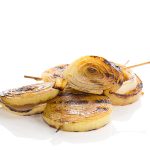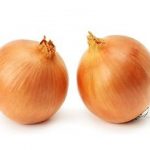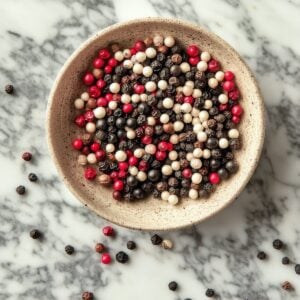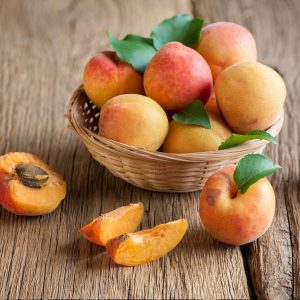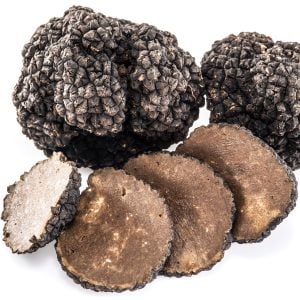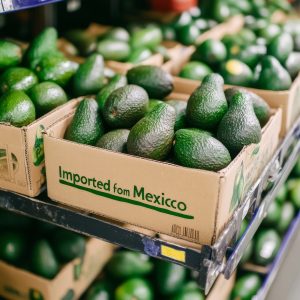Let’s Look at Onions
Onions are a kitchen staple that adds depth, flavor, and aroma to countless dishes. Whether making a savory stew, a fresh salad, or a simple side, onions can transform the overall taste with their natural sweetness and sharp bite. But while onions are easy to come by, knowing how to cook them correctly can make all the difference between a bland meal and one packed with flavor.
From raw to caramelized, onions offer a range of textures and flavors depending on how they’re prepared. Sautéing onions brings out natural sugars, creating a sweet and rich base for sauces and soups.
To add a little crispiness, fried onions are a perfect topping for burgers, casseroles, and even salads. Caramelizing onions slowly over low heat creates a soft, golden finish that works wonders in dishes like French onion soup or atop grilled meats.
In this post, I’ll explore different types of onions, their best uses in cooking, and techniques for getting the most flavor out of them. Whether you’re a beginner or an experienced home cook, mastering onions will elevate your cooking to a whole new level.
Onion Varieties
Onion Type |
Description |
Taste |
Best Used In Cooking |
| Yellow Onion | Classic all-purpose onion with golden skin and white flesh | Balanced sweet and pungent | Soups, stews, braises, caramelized, roasted, sautéed |
| White Onion | White skin and flesh, higher water content | Sharp, crisp, slightly less sweet | Salsas, Mexican dishes, stir-fries, salads |
| Red Onion | Deep purple-red skin with white flesh tinged with red | Mild, sweet when raw or grilled | Raw in salads, sandwiches, pickled, grilled, salsas |
| Shallots | Small, brownish skin, segmented bulbs | Mild, sweet, complex, subtle garlic undertones | Vinaigrettes, sauces, dressings, delicate sautés |
| Green Onions | Long, slender stalks with small white bulbs | Mild, fresh, slightly peppery | Garnish, stir-fries, salads, soups, omelets |
| Pearl Onions | Tiny round onions, white, red, or yellow varieties | Sweet, mild | Braises, stews, roasted whole, pickled, glazed |
| Leeks | Long cylindrical stalk with white base and green tops | Mild, sweet, buttery when cooked | Soups (esp. potato leek), gratins, quiches, braises |
| Cipollini Onions | Small flat round onions, usually yellow or white skin | Very sweet, rich | Roasted, caramelized, braises, sauces |
| Ramps (Wild Leeks) | Small, thin wild onions with broad green leaves and purple-tinged stems | Strong, garlicky-onion flavor | Pestos, pickles, sautés, grilled, in pastas |
| Spring Onions | Young onions with larger bulbs than green onions | Mild, sweet, juicy | Roasted, grilled, in salads, salsas, stir-fries |
| Sweet Onions (e.g. Vidalia, Walla Walla) | Large, pale yellow skin, very high sugar content | Very sweet, mild, low pungency | Raw in salads, sandwiches, onion rings, caramelized |
| Torpedo Onions | Long, slender, torpedo-shaped red onions | Sweet, mild | Grilled, roasted, salads |
Nutritional Benefits
Onions are a good source of vitamins and minerals, including vitamin C, folate, and potassium. They also contain compounds shown to have anti-inflammatory and antioxidant effects. In addition to their nutritional benefits, they are a very versatile ingredient in the kitchen and can be used in a wide range of dishes to add flavor and depth.
Benefit |
Description |
Best Onion |
| Low in Calories | Onions are low in calories, making them an easy addition to meals without significantly impacting intake | All types (yellow, white, red, shallots, green onions) |
| Rich in Antioxidants | High in antioxidants like quercetin and sulfur compounds, which help fight oxidative stress | Red onions, yellow onions |
| Anti-Inflammatory | Contain compounds that can help reduce inflammation in the body | Red onions, shallots |
| Heart Health | May help lower blood pressure, reduce cholesterol levels, and support cardiovascular health | Red onions, yellow onions |
| Supports Immune Function | Contains vitamin C and phytochemicals that boost immune function | Green onions, yellow onions |
| Antibacterial Properties | Natural compounds in onions have antibacterial effects | White onions, red onions |
| Aids Digestion | Rich in prebiotics that support healthy gut bacteria | All types, especially raw onions |
| Blood Sugar Regulation | Certain compounds in onions may help regulate blood sugar levels | Yellow onions, red onions |
| Bone Health | Some studies suggest onions may help improve bone density | Yellow onions, sweet onions (e.g., Vidalia) |
| Cancer-Fighting Potential | Sulfur compounds and flavonoids in onions are linked to reduced risk of certain cancers | Red onions, shallots |
Cooking with Onions
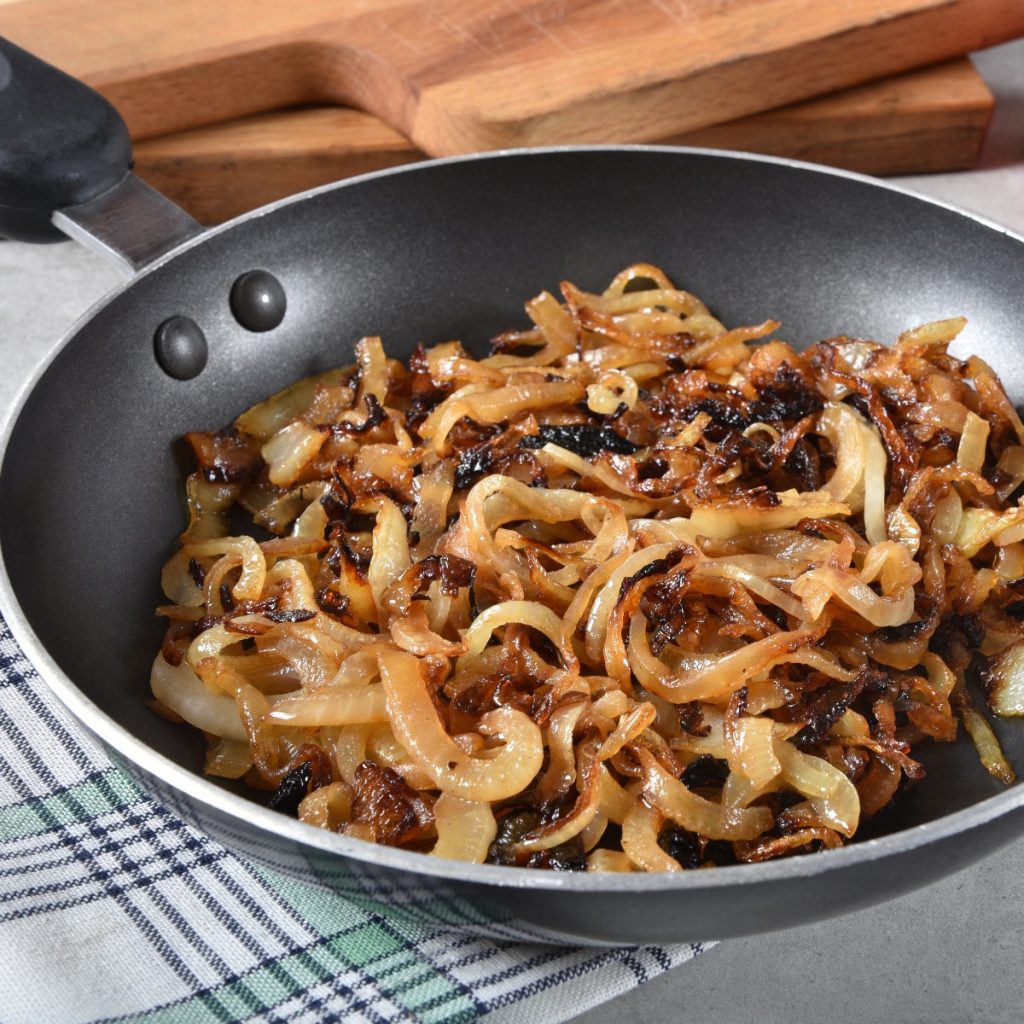
One of the most popular ways to use onions is to slice them and sauté them in a pan until they are soft and caramelized. Caramelized onions have a rich, sweet flavor that adds depth to soups, stews, sandwiches, and other dishes.
My daughter wrote a great post about caramelized onions here. To caramelize onions, start by slicing them thinly and heating a bit of oil or butter in a pan. Add the onions to the pan and cook them over medium heat, occasionally stirring, until they are soft and golden brown. This process can take anywhere from 20-30 minutes, depending on the size and type of onions you use.
Onions can also be roasted in the oven or grilled to bring out their sweet, mellow flavor. To roast onions, slice them into wedges and toss them with oil, salt, and pepper. Place them on a baking sheet and roast them in a 375-degree oven for 20-30 minutes or until they are tender and caramelized. To grill onions, slice them into wedges.
Cooking Method |
Simple Directions |
Served As / In: |
| Sauté | Cook in a small amount of oil or butter over medium heat | Toppings for meats, vegetables, pasta, eggs |
| Caramelize | Cook slowly in butter or oil over low heat until deeply browned | Burgers, pizzas, sandwiches, soups, dips |
| Roast | Toss with oil, roast in oven at 400°F until tender & golden | Side dish, salads, grain bowls, antipasto |
| Grill | Brush with oil, grill over medium heat until charred & tender | Tacos, burgers, grilled vegetable platters |
| Pickling | Soak sliced onions in vinegar, sugar, spices | Condiment for sandwiches, tacos, salads |
| Baking | Bake whole or in dishes at 350–400°F | Casseroles, gratins, savory tarts, stuffing |
| Blending | Cooked onions pureed in blender | Soups, sauces, dips, creamy bases |
How Important Are Onions in Cuisine?
Reason |
Description |
| Flavor Foundation | Builds layers of sweet, savory, and umami flavors in a wide range of dishes |
| Aromatics | Releases aromatic compounds when cooked, enhancing appetite and flavor complexity |
| Natural Sweetness | Cooking transforms natural sugars in onions, adding sweetness and depth without added sugar |
| Texture | Provides texture, from crisp and crunchy when raw to soft and silky when cooked |
| Versatility | Adapts to many cooking methods: sautéing, roasting, grilling, pickling, caramelizing, blending |
| Balance | Balances acidity, bitterness, richness, and spice, rounding out flavors in complex recipes |
| Nutritional Value | Low in calories, rich in antioxidants, contributes nutritional benefits |
| Cultural Universality | Featured in cuisines worldwide, making onions essential to global cooking |
Grilled Onions
Equipment
- 1 Grill gas or charcoal
Ingredients
- 1 large onion red, white, yellow depending
- oil olive or vegetable
- seasoning
Instructions
- Carefully remove the outer layer of the onion.
- Slice the onion into round pieces, ¾ to 1 inch thick.
- Brush each round with oil and add seasoning.
- Grill the rounds directly on the grill grate over medium heat for 5 to 7 minutes per side. If they are sticking to the grill, they are not ready to flip.
- Remove and serve.
Notes
Baked Stuffed Onions
Ingredients
- 2 large Spanish onions peeled and cut in half horizontally
- 2 oz. bread crumbs
- 1 tablespoon Parmesan cheese grated
- 1 tablespoon parsley chopped
- Extra virgin olive oil as needed
- Salt and pepper to taste
Instructions
- Brush each half of the onion with olive oil and bake in a 350°F onion until they start to soften.
- Remove the onion and scoop out a hole in the center. Do not penetrate all the way through. Leave a base for the stuffing. Also, do not scoop too wide a hole or the onion will lose its structure.
- Mix the breadcrumbs, cheese, parsley, salt and pepper. Chop the onion you scooped out and mix it with the bread crumbs.
- Moisten the mixture with enough olive oil to hold it together.
- Fill the onion halves and return them to the oven until the stuffing is brown, about 30 minutes.
Notes
Buying Onions
Here are some of the best ways to buy them:
- Buy fresh onions with dry, papery skin and no signs of sprouting or mold. Avoid onions that are soft or have any signs of spoilage.
- Please be sure to look for onions that are heavy for their size. This indicates high water content and good quality.
- You can purchase them in small quantities, only what you will use within a week or two, since they last only a short time and may start to spoil.
- When possible, purchase local and in-season onions, as they will have the best flavor and are often less expensive than out-of-season onions.
- Choose the right onion for the suitable dish, for example:
-
- Yellow onions are great for sautéing and caramelizing,
- White onions are suitable for fresh salsas, salads, and sandwiches
- Red onions are great for grilling, roasting, or pickling.
- Consider organic onions if they are available and if your budget allows, as they are less likely to be treated with chemicals and pesticides.
- If you plan to buy a large quantity of onions, consider buying them in bulk to save money.
By considering these factors when buying onions, you can ensure that you get high-quality onions that will be fresh, flavorful, and well-suited for your cooking needs.
Storage
The best way to store them is in a cool, dry, and well-ventilated place. Here are a few specific recommendations for storing onions:
- Keep them in a mesh or perforated plastic bag. This allows for proper airflow and prevents the onions from becoming damp, which can lead to rot.
- Store them in a cool, dry place like a pantry or root cellar. They should not be stored in the refrigerator, as the humidity can cause them to spoil faster.
- Avoid storing onions near potatoes. Potatoes give off moisture and ethylene gas, which can cause onions to spoil more quickly.
- If you cut an onion and have an unused portion, wrap it tightly in plastic or aluminum foil and store it in the refrigerator. It should be consumed within a week.
- Always check for any signs of spoilage before using an onion. Soft or moldy onions should be discarded immediately.
Following these tips can help ensure your onions stay fresh and last as long as possible.
What Ancient Civilization Worshiped Onions?
Evidence shows that onions have been cultivated and used for flavor and medicinal properties for thousands of years. Many ancient civilizations, including the ancient Egyptians, Greeks, and Romans, highly valued onions and used them in a wide range of dishes and for medicinal purposes.
The ancient Egyptians are particularly famous for their love of onions, and they are often depicted in ancient Egyptian art and literature. They were believed to have medicinal properties and were used to treat many ailments, including stomach aches, coughs, and sore eyes.
Onions were also an important part of the ancient Egyptian diet, and they were used in a wide range of dishes, including stews, soups, and roasted meats.
Despite the ancient Egyptians’ high regard for onions, it is unlikely that they worshipped onions as gods or deities. However, they were an essential and highly valued part of ancient Egyptian culture and daily life.
What Can You Eat to Get Rid of Onion Breath Fast?
There are a few different things you can eat or drink to help get rid of onion breath fast:
- Raw fruits and vegetables: Crunchy raw fruits and vegetables, such as apples, pears, and carrots, can help to scrub away any remaining bits of onion from your teeth and mouth. They can also stimulate saliva production, which can help to freshen your breath.
- Yogurt: Yogurt contains beneficial bacteria that can help to neutralize onion breath. It is also a good source of calcium, which can help to strengthen your teeth and reduce the risk of bad breath.
- Green tea: contains antioxidants that can help to neutralize bad breath. It also contains catechins, which can help to kill the bacteria that cause bad breath.
- Mints and gum: Mints and gum can help to freshen your breath by stimulating saliva production. Look for products that contain natural ingredients, such as peppermint or spearmint, which can help to neutralize bad breath.
- Lemon water: Sipping on a glass of lemon water can help to freshen your breath and neutralize onion breath. The citric acid in lemon water can help to kill bacteria in your mouth, and the lemon flavor can help to mask any lingering onion odors.
It’s worth noting that while these foods and drinks can help to freshen your breath and neutralize onion breath, they are not a substitute for proper oral hygiene.
Why Do You Cry When Cutting Them and How Can You Prevent It?
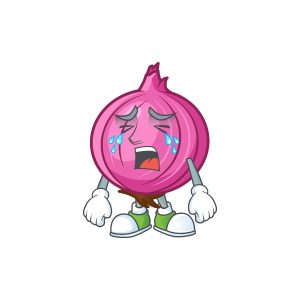
When you cut an onion, the knife slices through cells in the onion, releasing a gas called syn-propanethial-S-oxide. This gas diffuses into the air and comes into contact with your eyes, reacting with the water in your tears to form sulfuric acid. The sulfuric acid irritates the eyes, causing them to tear up to flush out the irritant.
There are a few different ways you can prevent crying while cutting onions:
- Use a sharp knife: A sharp knife will cause fewer cells to be damaged when slicing through the onion, which means less gas will be released.
- Chill the onion: Putting it in the refrigerator for a bit before cutting it can help reduce the gas released.
- Cut the onion under running water: Cutting it under a stream of running water can help wash away the gas as it is released.
- Use a fan: Pointing a fan towards your face while you cut the onion can help to blow the gas away from your eyes.
- Wear goggles: Special onion or swimming goggles can help protect your eyes from the gas.
- Try a different technique: Cutting the onion from the root end rather than the top can help reduce the gas released.
- Use a mandoline: A mandoline is a kitchen tool that can thinly slice onions. Using a mandoline can help reduce the amount of gas released because the onions are sliced into smaller pieces.




